Xukun Li
Deep learning to estimate the physical proportion of infected region of lung for COVID-19 pneumonia with CT image set
Jun 09, 2020



Abstract:Utilizing computed tomography (CT) images to quickly estimate the severity of cases with COVID-19 is one of the most straightforward and efficacious methods. Two tasks were studied in this present paper. One was to segment the mask of intact lung in case of pneumonia. Another was to generate the masks of regions infected by COVID-19. The masks of these two parts of images then were converted to corresponding volumes to calculate the physical proportion of infected region of lung. A total of 129 CT image set were herein collected and studied. The intrinsic Hounsfiled value of CT images was firstly utilized to generate the initial dirty version of labeled masks both for intact lung and infected regions. Then, the samples were carefully adjusted and improved by two professional radiologists to generate the final training set and test benchmark. Two deep learning models were evaluated: UNet and 2.5D UNet. For the segment of infected regions, a deep learning based classifier was followed to remove unrelated blur-edged regions that were wrongly segmented out such as air tube and blood vessel tissue etc. For the segmented masks of intact lung and infected regions, the best method could achieve 0.972 and 0.757 measure in mean Dice similarity coefficient on our test benchmark. As the overall proportion of infected region of lung, the final result showed 0.961 (Pearson's correlation coefficient) and 11.7% (mean absolute percent error). The instant proportion of infected regions of lung could be used as a visual evidence to assist clinical physician to determine the severity of the case. Furthermore, a quantified report of infected regions can help predict the prognosis for COVID-19 cases which were scanned periodically within the treatment cycle.
Deep Learning System to Screen Coronavirus Disease 2019 Pneumonia
Feb 21, 2020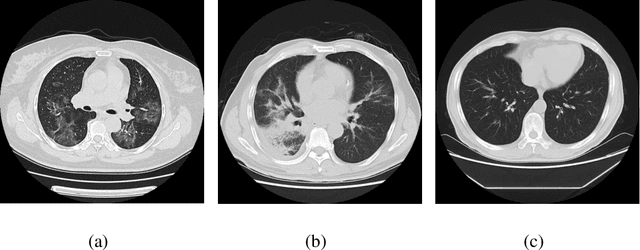
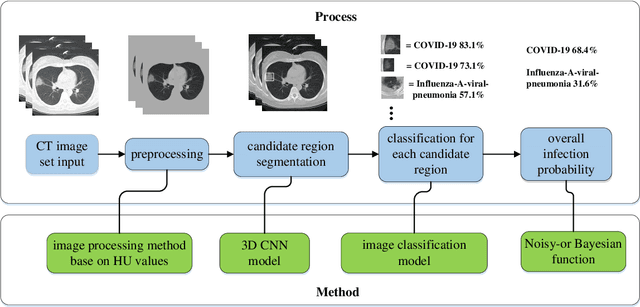


Abstract:We found that the real time reverse transcription-polymerase chain reaction (RT-PCR) detection of viral RNA from sputum or nasopharyngeal swab has a relatively low positive rate in the early stage to determine COVID-19 (named by the World Health Organization). The manifestations of computed tomography (CT) imaging of COVID-19 had their own characteristics, which are different from other types of viral pneumonia, such as Influenza-A viral pneumonia. Therefore, clinical doctors call for another early diagnostic criteria for this new type of pneumonia as soon as possible.This study aimed to establish an early screening model to distinguish COVID-19 pneumonia from Influenza-A viral pneumonia and healthy cases with pulmonary CT images using deep learning techniques. The candidate infection regions were first segmented out using a 3-dimensional deep learning model from pulmonary CT image set. These separated images were then categorized into COVID-19, Influenza-A viral pneumonia and irrelevant to infection groups, together with the corresponding confidence scores using a location-attention classification model. Finally the infection type and total confidence score of this CT case were calculated with Noisy-or Bayesian function.The experiments result of benchmark dataset showed that the overall accuracy was 86.7 % from the perspective of CT cases as a whole.The deep learning models established in this study were effective for the early screening of COVID-19 patients and demonstrated to be a promising supplementary diagnostic method for frontline clinical doctors.
A Deep Learning System That Generates Quantitative CT Reports for Diagnosing Pulmonary Tuberculosis
Oct 05, 2019
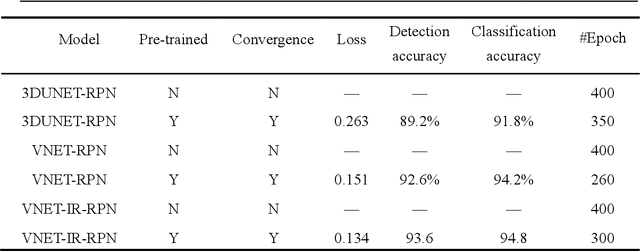
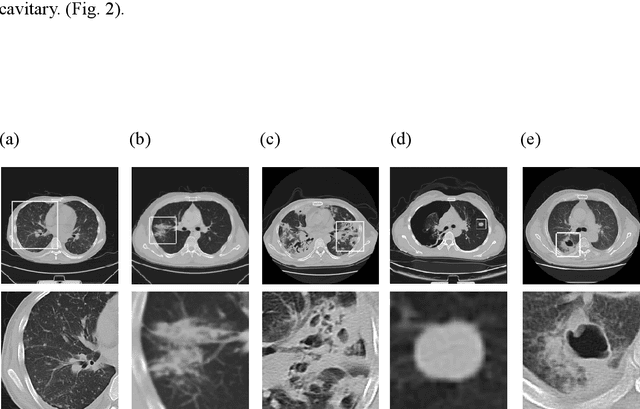
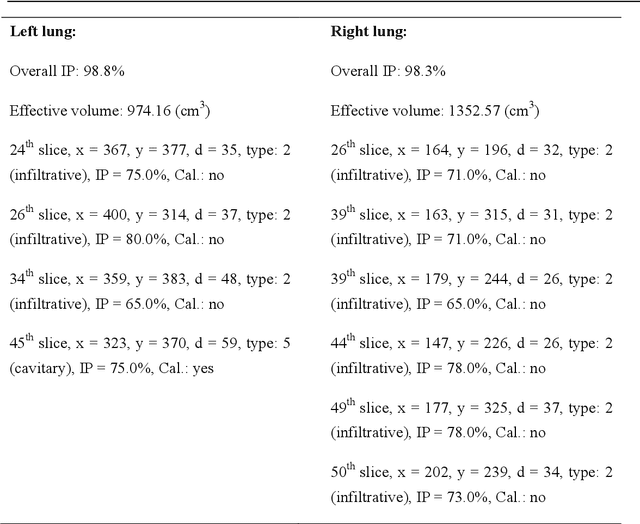
Abstract:We developed a deep learning model-based system to automatically generate a quantitative Computed Tomography (CT) diagnostic report for Pulmonary Tuberculosis (PTB) cases.501 CT imaging datasets from 223 patients with active PTB were collected, and another 501 cases from a healthy population served as negative samples.2884 lesions of PTB were carefully labeled and classified manually by professional radiologists.Three state-of-the-art 3D convolution neural network (CNN) models were trained and evaluated in the inspection of PTB CT images. Transfer learning method was also utilized during this process. The best model was selected to annotate the spatial location of lesions and classify them into miliary, infiltrative, caseous, tuberculoma and cavitary types simultaneously.Then the Noisy-Or Bayesian function was used to generate an overall infection probability.Finally, a quantitative diagnostic report was exported.The results showed that the recall and precision rates, from the perspective of a single lesion region of PTB, were 85.9% and 89.2% respectively. The overall recall and precision rates,from the perspective of one PTB case, were 98.7% and 93.7%, respectively. Moreover, the precision rate of the PTB lesion type classification was 90.9%.The new method might serve as an effective reference for decision making by clinical doctors.
Localizing and Quantifying Damage in Social Media Images
Jun 09, 2018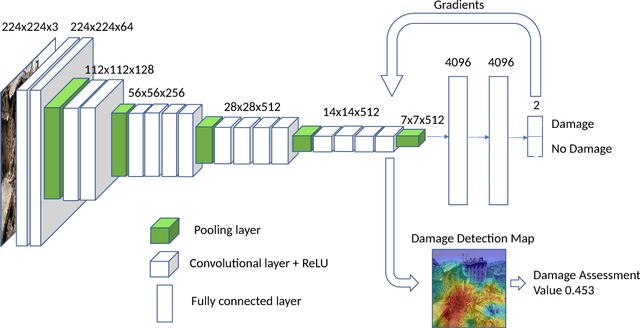
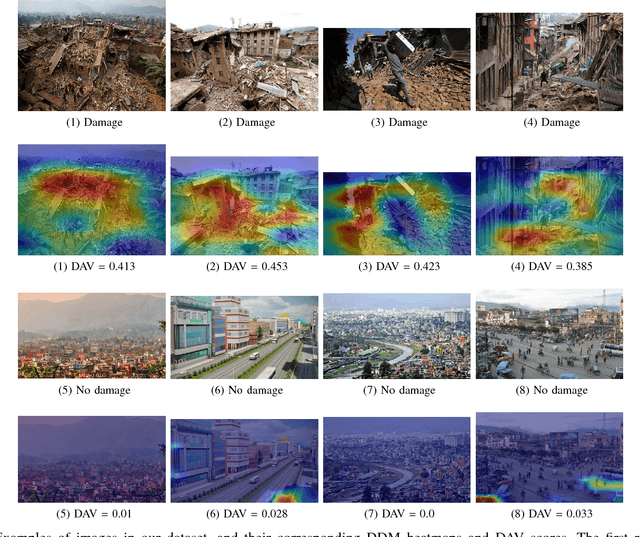
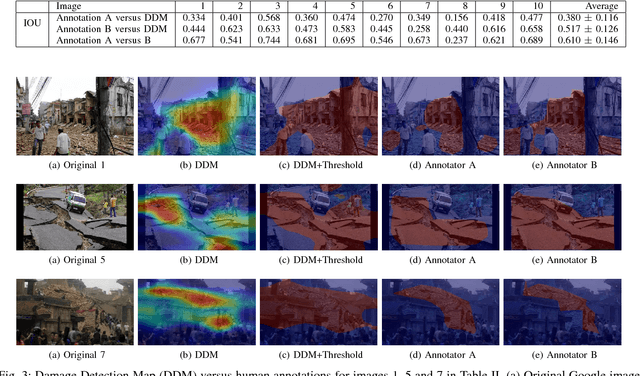

Abstract:Traditional post-disaster assessment of damage heavily relies on expensive GIS data, especially remote sensing image data. In recent years, social media has become a rich source of disaster information that may be useful in assessing damage at a lower cost. Such information includes text (e.g., tweets) or images posted by eyewitnesses of a disaster. Most of the existing research explores the use of text in identifying situational awareness information useful for disaster response teams. The use of social media images to assess disaster damage is limited. In this paper, we propose a novel approach, based on convolutional neural networks and class activation maps, to locate damage in a disaster image and to quantify the degree of the damage. Our proposed approach enables the use of social network images for post-disaster damage assessment and provides an inexpensive and feasible alternative to the more expensive GIS approach.
 Add to Chrome
Add to Chrome Add to Firefox
Add to Firefox Add to Edge
Add to Edge